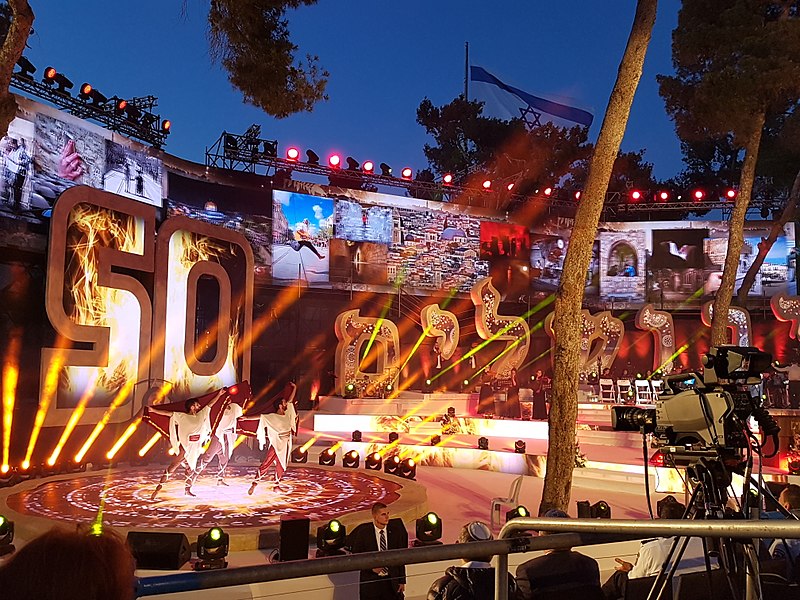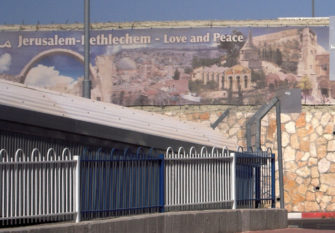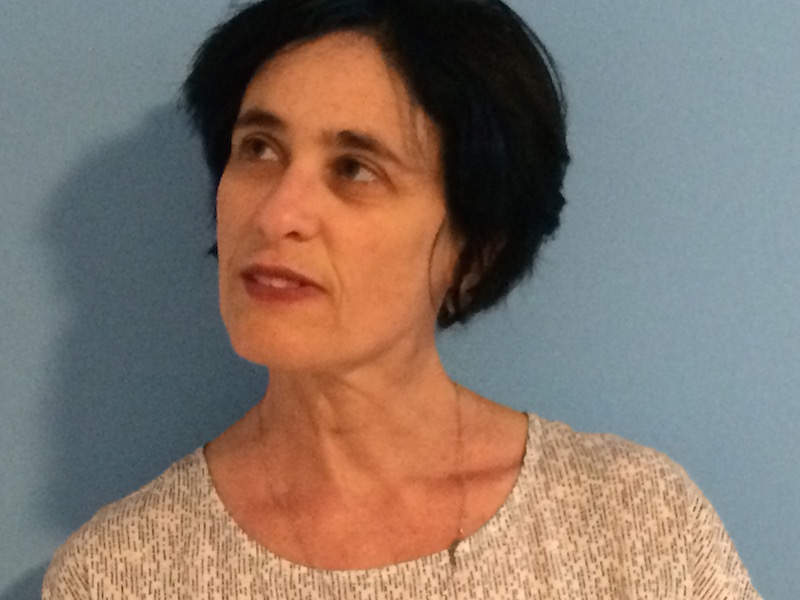
The city that speaks its fragmentation and divide so clearly and loudly cannot be forced into coherence because “cities” do not cohere. Only people do.
The story is well known: On June 27, 1967, the Israeli Government officially annexed the seventy kilometers of land the Israeli army conquered a couple of weeks earlier. East Jerusalem and its 69,000 Palestinian residents were incorporated into the Israeli municipality of Jerusalem. On July 30, 1980, the Israeli Knesset voted and approved the “Jerusalem Law,” which declared unified Jerusalem the capital of the state of Israel despite critique from the UN. Since then the efforts to declare and celebrate the city’s unification continue, perhaps because a meaningful and valid unification continues to fail.
1. Most modern cities are divided: separating the rich and the poor, concealing racial segregation by relating to the city’s different neighborhoods in terms borrowed from folklore: “colorful,” “authentic,” “unique” etc. Hoods and slums are naturalized as the lower ends of the town, while gated communities or otherwise rich parts, are similarly seen as a natural urban development. Inequality, separatism, classism, and racism are translated into and masked by imaginary urban geographical terminology. This is true for modern, western cities: Paris, London, Los Angeles, Berlin, Toronto, NYC, and many more. But unlike these and other cities, Jerusalem is divided at the core. It is geographically divided into two, with one part (the West) serving as the location for all Israeli government activities since 1948 and the other side (the East) occupied since 1967, but in no way integrated. Access to Jewish holy sites is well maintained for both sides, but this by imposing military sanctions and policing on the majority of the native population (Palestinians). In short, the logic of so called unification is one of increasing maximum mobility rights to Israeli Jews in the occupied Palestinian populated areas while providing minimum resident rights to Palestinians in turn. Jerusalem is a city that emblematizes partition as such. Divided, it divides. And the more it is said to be unified, the more divided it is. For the unification is not about unity but about militarized colonial control. A city that is colonized and occupied cannot be unified but by force.
2. It is no secret that within the borders of pre-1967 Israel/Palestine the population (of Israeli citizens) is already sharply divided: there are Jewish Israeli citizens (“full citizens”) and there are Palestinian Israeli citizens who, to borrow Homi Bhabha’s language from another colonial context, “are almost the same but not quite” (Bhaba, “Of the Mimicry of Man,” The Location of Culture, 1994: p. 86). In short, pre-1967 Israel is a partitioned nation, whereby the divided populations (Arab Palestinians and Jews) live radically apart. After 1967, with Israel conquering the West Bank, Golan Heights, East Jerusalem and Gaza, the status of partition becomes even more pronounced. If the divide between Jewish and Palestinian Israeli citizens was sharp and decisive in itself, the new geo-political reality created a further and even more dramatic partition between citizens (Israeli) and non-citizens (Palestinians residing in the occupied territories). The one place where all these divisions, partitions, inequalities, and symbolic demarcations come into play all at once is Jerusalem. Here you find, primarily on the West side, Israeli Jewish citizens and in lesser numbers, Palestinian Israeli citizens. While on the East side, (with the exception of about 200,000 Jewish settlers with citizenship, who are there to “Judaize” East Jerusalem), you find mainly Palestinian non-citizens: non-citizens living in the claimed capital of the only democracy in the Middle East. Politically speaking, then, close to a fourth of the residents of Jerusalem are in fact ghosts. They live in a capital (a city in which they are residing as if by mercy) of a nation to which they do not belong (they are non-citizens). While many have lived in East Jerusalem for generations, in 1967 they became non-citizens with temporary residence (since 1967, over 14,000 Palestinians have lost their residency): they are not-quite there.
3. Truthfully speaking, Jerusalem was never unified. Once it was partitioned in 1948 it remained so, despite (or maybe due to) the repeated declaration of its unification. Split in two, with a modern light rail train crossing in the middle, Jerusalem is the mirror through which Israel’s true nature as apartheid state becomes visible to all. The impossibility of this city reminds us that there is no “Jerusalem” but “Jerusalems” and that “Israel” too, acquires its coherence and unity only on the basis of making Palestine and Palestinians forgotten, erased.
4. To speak today of “Jerusalem,” then, is to continue to propel an image of coherence and unity that has never existed. Since 1967, Israel has been celebrating the unification of Jerusalem. But what is celebrated, especially in the last few years, when the unification parties have become so extravagant and visibly excessive, is not unification. What is celebrated with flashy lights, music, flags and fireworks is the militarized presence of Israel all over East Jerusalem: in the gates to the Old City, in the alleys, by the train, by the universities and schools. What is celebrated in other words, is the Occupation. And the celebration of power is itself a sight of power and a vulgar demonstration of dominance displayed all across East Jerusalem. This is not the sight of unity being celebrated. It is a sight of colonial aggression.
-

Photo Credit: Lisa Nessan. A woman walks along the Jerusalem separation wall.
5. The so-called “unified Jerusalem” is primarily a rhetorical manipulation. But it is also an urban experiment in unifying geography while keeping populations apart. Jerusalem, then, cannot be Israel’s capital, even if Trump fancy’s so, because there is no one Jerusalem. The city that speaks its fragmentation and divide so clearly and loudly cannot be forced into coherence because “cities” do not cohere. Only people do.
6. After occupying East Jerusalem in 1967, the Israeli state did the only thing it knows how to do when it comes to Palestinians: it pretended the population didn’t exist or that it would soon somehow miraculously disappear. Instead of fostering real and meaningful unity between residents of East Jerusalem and West Jerusalem, between Israeli Jews and Palestinians, the Israeli state invested in a futile goal: unite land, not people. And when land could not be united because of people, Israel built a wall. In 2002 a mighty and ugly separation wall cut through neighborhoods in East Jerusalem and placed areas and populations previously “in” Jerusalem on the other side of the Wall. People who were residents one day, could no longer enter the city the other. We now have at least three Jerusalems, each in a different position vis-à-vis the Wall.
7. Unified Jerusalem is a myth. The very term masks and covers a politics of extreme divide and inequality. West Jerusalem and East Jerusalem may be connected nowadays by a fast train but the division between citizens and non-citizens, those who enjoy water and other services and those who are cut off from municipal services, cannot be overcome by any such simple means of connectivity.
-

Photo Credit: Ted Swedenberg. Jerusalem-Bethlehem militarized checkpoint with sign: “Love and Peace.”
8. Jerusalem today is an ill place. A lab for social hostilities. A city surrounded by walls, divided by walls. Jerusalem, “a holy city” as they say, is the end result of a politics of partition, colonial aggression, and ethno-national separatism. No place on earth could be less suitable to be called “unified,” no place on earth less qualified to be(come) a capital. The matter here is not how holy the city is for Jews, Christian, Muslims or others. These debates, important as they may be, simply mask the fact that, at present, too many of the city’s inhabitants are discriminated against and kept apart in order for the city itself to be celebrated as unified.
9. Last year, during the 49th anniversary of “unified Jerusalem” (yerushaliam ha-meochedet) as it is called in Hebrew, Israeli prime minister, Benjamin Netanyahu announced: “It has been 49 years since Jerusalem has been released from its shackles. We shall never go back to a reality of a wounded and torn apart city (ir sh’sua’ v’ptzua’)!”
10. This year, in response to Trump’s endorsement of Jerusalem as the capital of Israel, Nir Barkat, mayor of Jerusalem had this to say in defense of Jerusalem’s unified status: “I talk to Palestinians living in East Jerusalem and I can tell you, they want to live in unified Jerusalem, they understand what is best for them, they compare themselves to others living anywhere in the middle east and they realize they are much better off with Israel.”
Through such a thick colonial mindset (knowing what is better for the occupied and for the city itself) even a city so brutally divided, and a reality so antagonistic, violent and unjust, can seem “unified.” It is this blinding power of the colonial enterprise that must be combated for the residents of a city which is not one (and which under current circumstances cannot become one) to be seen and heard equally, across walls and divisions which cannot be cheaply done away with.

